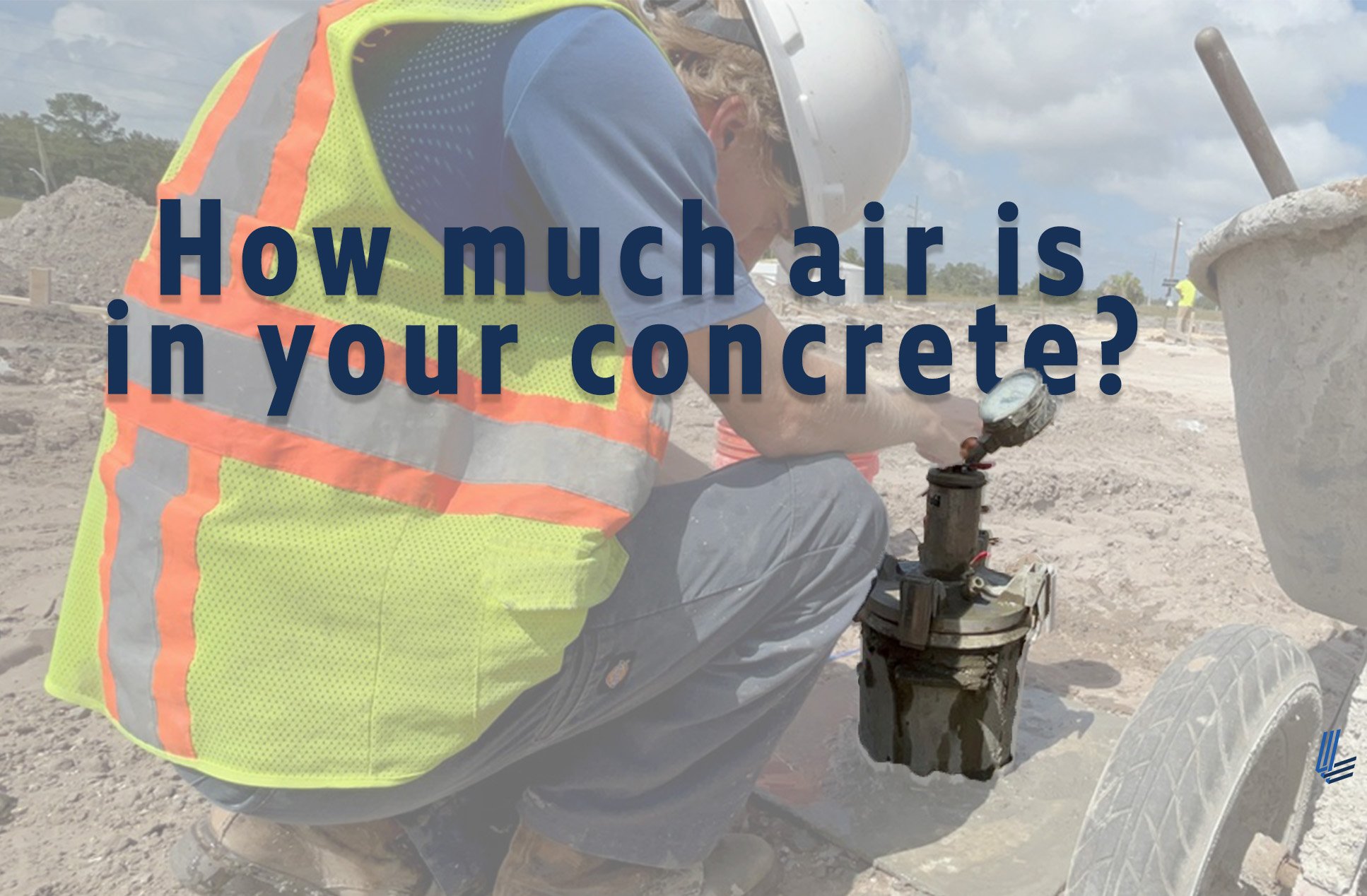Concrete Testing: How much air is in your concrete?
January 19th, 2024 | 2 min. read

Concrete is the backbone of many structures, ensuring their strength and durability. However, the quality of concrete isn't always visible to the naked eye. That's where pressure meter testing comes into play, providing a quick and efficient way to assess the air content in concrete.
%20(1).webp?width=416&height=555&name=IMG_0072%20(1)%20(1).webp)
Before reading about how the test works and why you need it, click here to watch a pressure meter test. In this video, you will watch one of our field technicians perform a pressure meter concrete test at a commercial site in Jacksonville, FL.
Pressure meter concrete testing, a quick yet effective method, typically completes in under ten minutes, offering a swift assessment of concrete quality. For optimal accuracy, it's best to begin the test around 15 minutes after the initial concrete sample is collected, allowing for a proper assessment.
The testing process starts by filling one-third of the device's base and methodically rodding each layer 25 times. This action is essential to ensure consistency in the sample. A crucial step follows where the device's exterior is gently tapped approximately 15 times with a mallet. This action is key to eliminating any air pockets that might have developed during the filling process, ensuring a more accurate reading. After layering and leveling the top layer, the device's top is securely fastened, and the underside is filled with water.
During the pressurization and calibration phase, a hand pump is used to pressurize the top of the meter to a calibrated level. This critical step in the concrete testing process helps reveal the air-void content in the concrete, an important factor in determining concrete quality. Once the pressure is released, the meter’s dial offers a reading of the air content, providing an essential indicator of the concrete's quality.
.webp?width=591&height=332&name=IMG_5998%20(1).webp)
Importance of Pressure Meter Testing:
The data gleaned from this testing method is invaluable. The readings from the dial are carefully recorded and incorporated into a comprehensive report. This report is a vital tool, offering detailed insights into the air content of the tested concrete. For builders, engineers, and project managers, this document is crucial, aiding them in making informed decisions about the concrete's suitability for their specific construction projects.
By utilizing pressure meter concrete testing, industry professionals gain a significant advantage in assessing concrete quality quickly and efficiently. This testing method is not only about meeting industry standards but also about ensuring the longevity and safety of the structures built with the tested concrete.
Concrete with over 6% air content is considered low quality and poses a risk of cracking. Structures built with low-quality concrete may not withstand the test of time, leading to potential safety hazards. Pressure meter testing helps identify such issues early in the construction process, allowing for necessary adjustments and ensuring that the final structure meets the required standards.
Pressure meter concrete testing is an indispensable tool in the construction industry, offering a quick and reliable way to assess the air content in concrete. By following a simple testing process and recording the results accurately, builders and engineers can make informed decisions about the quality of the concrete they are using. Investing in pressure meter testing is an investment in the longevity and safety of the structures we build.
This is just one of the many construction materials testing services that are offered at Legacy Engineering. Feel free to browse the materials testing section in our Knowledge Base tab. There you can read articles and watch videos that highlight our services. To schedule testing, visit the construction materials testing service page and click Schedule a free Consultation.
Topics: